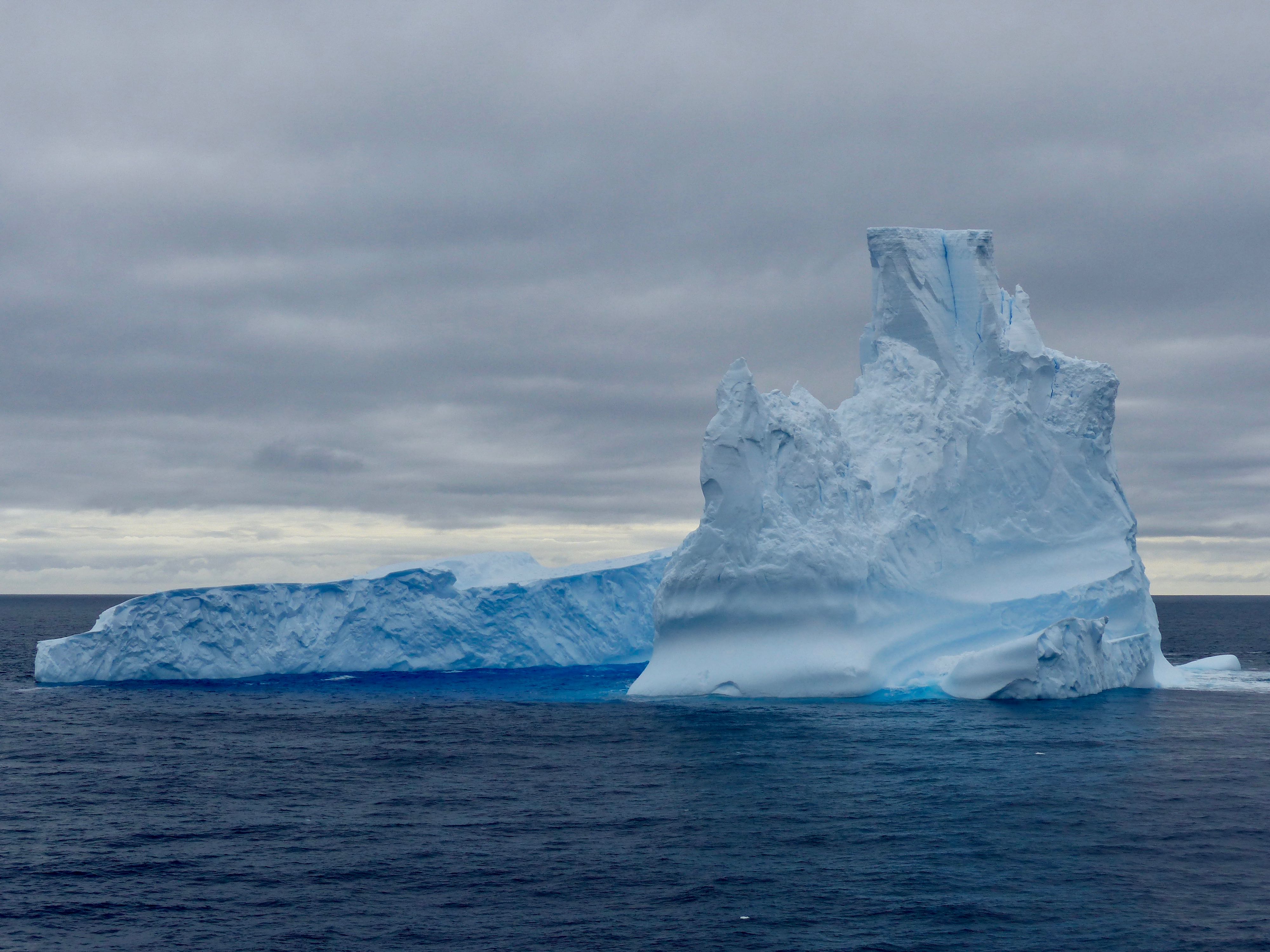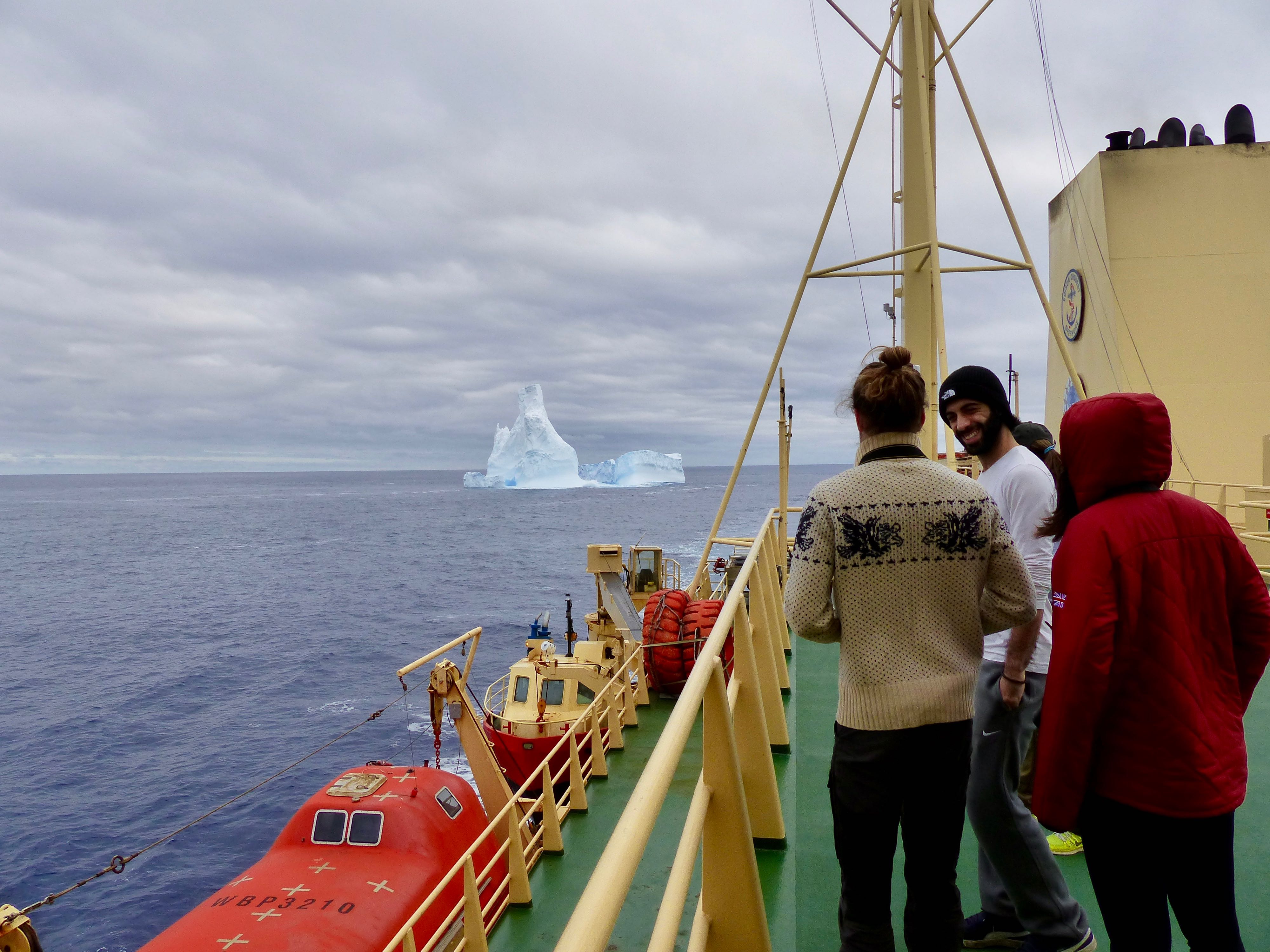Snow on Ice: Into the Ice #4
“Iceberg! Starboard beam.” I was sitting at my computer typing and I think it took a second to sink in for me and everyone else in the room. Then we were all on our feet in a flurry, rushing to each of our personal stashes of camera equipment scattered throughout the ship, and up to the bridge on the 05 deck, five levels up a monotonous steel staircase from the main deck. I opened the door and, as I stepped outside, I saw the bright white island towering a half kilometer from the ship, off the "starboard beam," which is a nautical term for right side of the ship in the 3 o’clock direction. Then I heard everyone’s exclamations. “Whoa!” “So beautiful.” “I would never have imagined.” Clicking filled the air as all of the scientists’ cameras worked hard to capture every angle of that first sighting. The scale of the berg was beyond what first-timers to Antarctica had expected, but it paled in comparison to what we would soon encounter. We were still two full days away from Antarctica and the edge of the Amundsen Sea.

That first iceberg didn’t give the impression it was drifting. Measuring larger than a football field across, its immensity made it seem like the ship was the only one in motion. As the day progressed, though, more began to appear and you started to get the sense of a migration away from Antarctica. The closer to the source the more there were. It’s a journey many set out on from Antarctica; only a few make it as far north as that iceberg did before they melt and break apart.

Icebergs here have come from the glaciers and ice shelves around Antarctica. Ice shelves are floating extensions of the ice sheet and glaciers that flow out onto the ocean and serve as added stability for the ice sheet behind it. Icebergs constantly break off (called calving) from the ice shelves around Antarctica, many of them the size of the first iceberg we saw, others, the size of your local downtown area. Many researchers, including a few within the ITGC, study icebergs to learn more about how the ice sheet is changing and will change in the future. Some icebergs, traveling from Antarctica to the north into warmer water, can be used as a natural experiment for examining how an ice shelf might respond to a much warmer environment. The shape and size of icebergs can tell us something about the processes that may have caused the calving and about the condition of the ice it broke off from. Onboard, Aleksandra Mazur, a postdoctoral researcher from the University of Gothenburg in Sweden, has studied how to track icebergs from space to determine how long they stay in the Amundsen Sea and how the numbers have changed over time. The ones out here in the Southern Ocean have been floating for anywhere from a few months to more than ten years and many have been sculpted by the ocean in uniquely spectacular ways. Each one is a masterpiece and the ones we have seen in the past two days since our first sighting have been no different.







